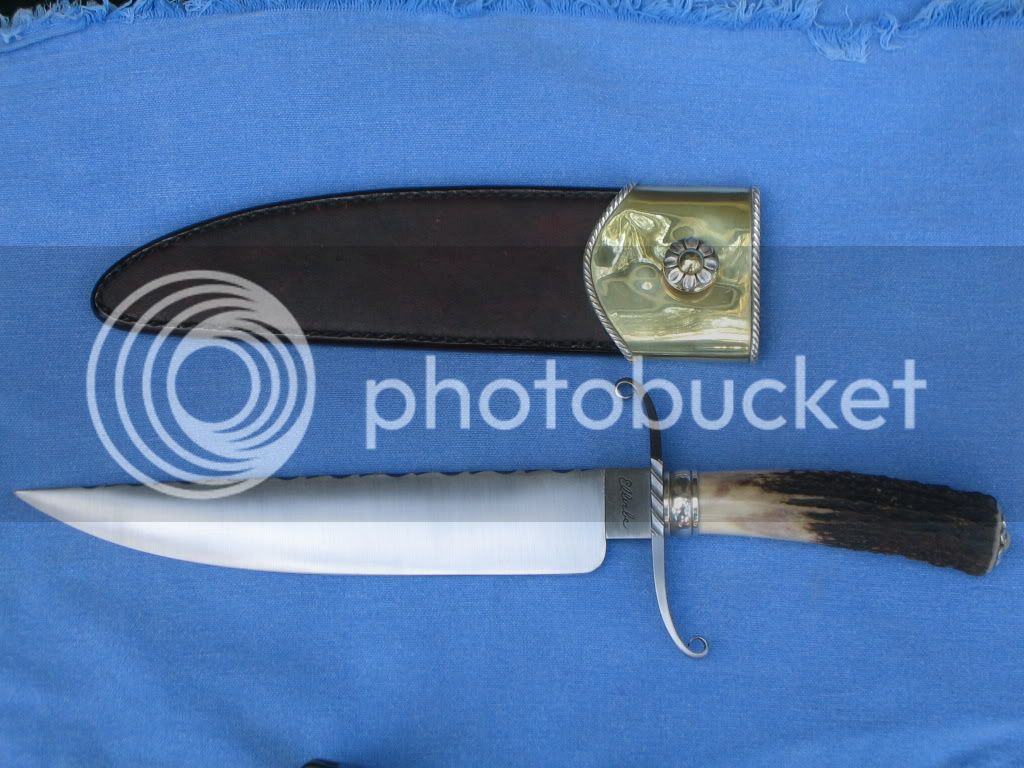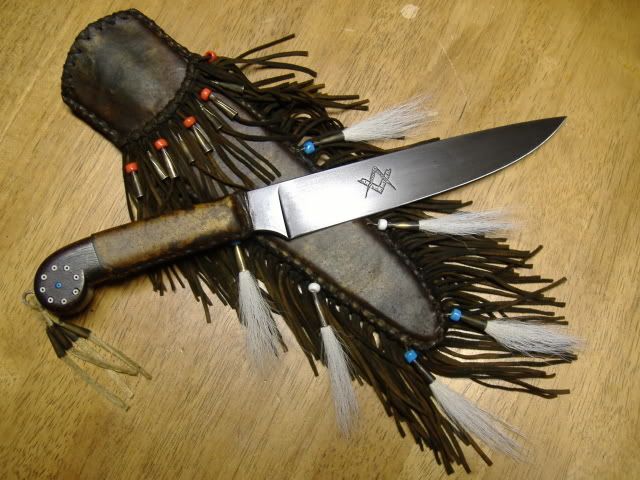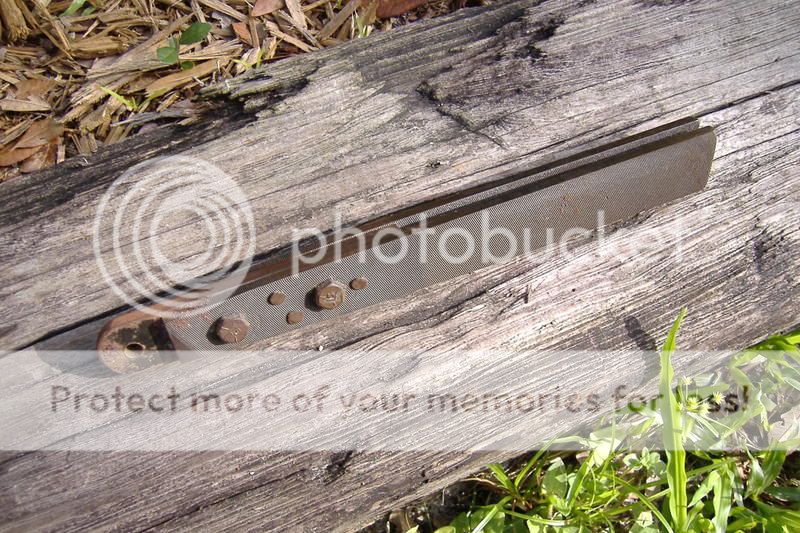Thanks to everyone for their help. There are a lot of fine craftsmen here to study and get ideas from. A very special thanks to Wick for answering all of my questions quickly and thoroughly. As Crockett said, since it is a hobby, I can take my time and it has been a while since I posted the first images.
I am about 1/2 way done with my knives. They are ready to heat treat, put handles on and then finish.
My first one has some problems around the front finger guard, but for my first knife is isn't too bad. The second one of this style I make will be a little longer. Not to mention, the steel was a little thick and took quite a while to hand file.
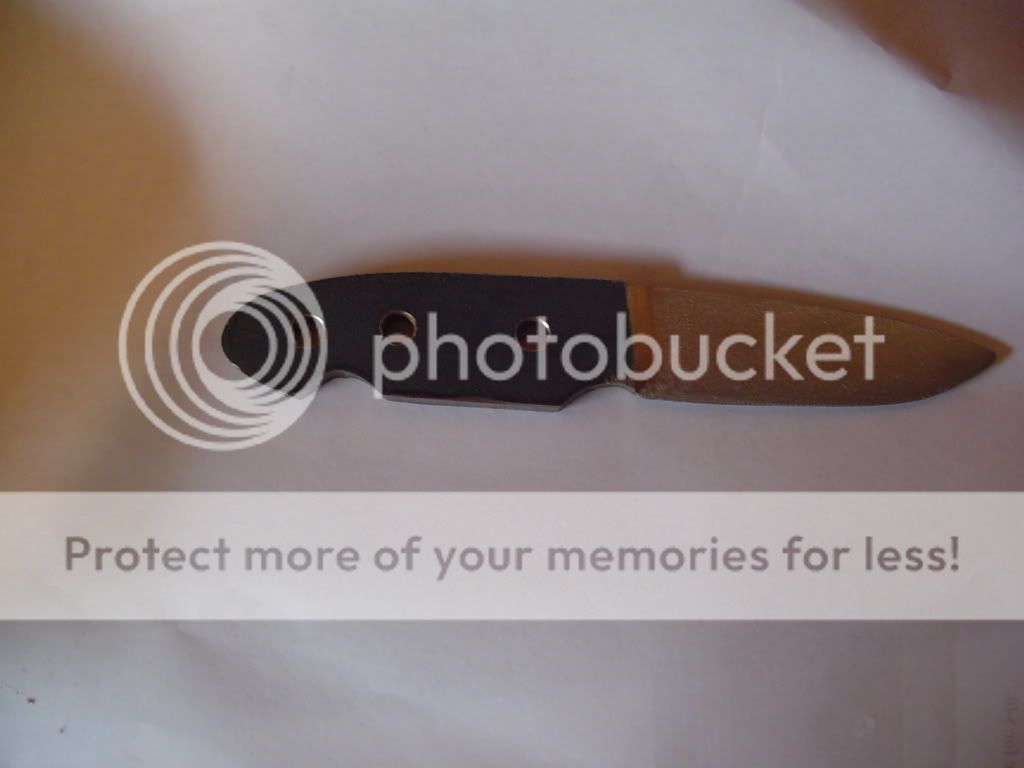

I started a second knife, a throwing knife. I am pretty happy with how it turned out. I might have removed a little too much material on the point because it is pretty flexible there. I am hoping that heat treating will help with that. All in all, I can see a definite curve in my learning curve.
Again, thanks for all the help. Any comments are appreciated.
Brian
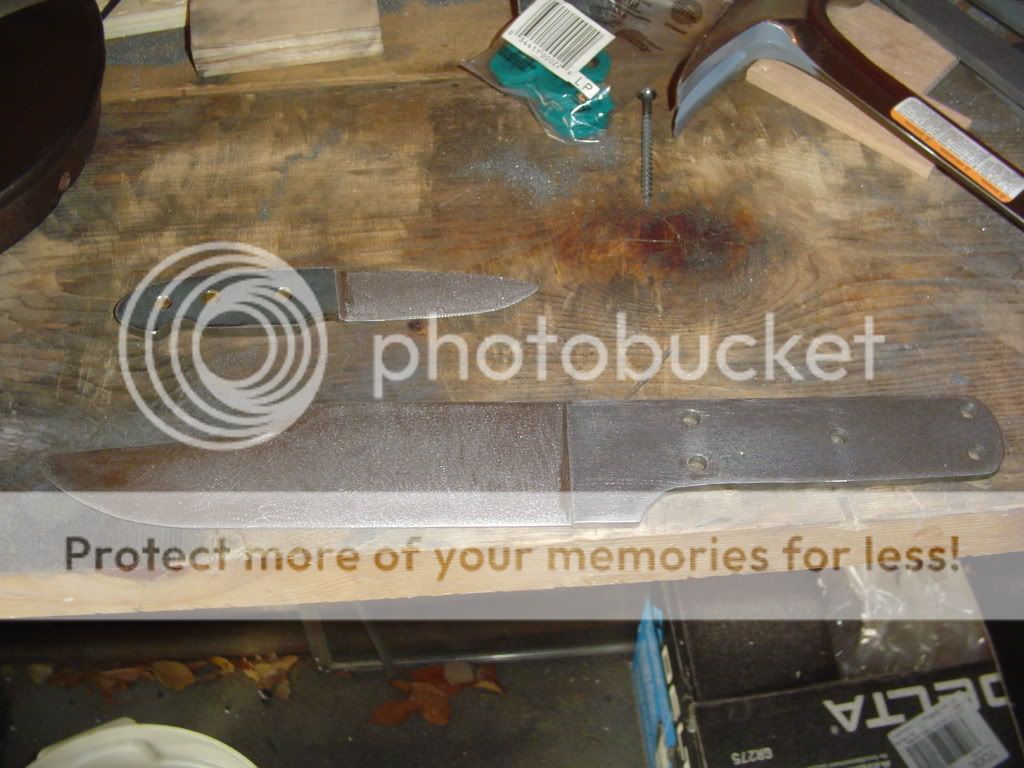
Any comments are appreciated.
Thanks.
I am about 1/2 way done with my knives. They are ready to heat treat, put handles on and then finish.
My first one has some problems around the front finger guard, but for my first knife is isn't too bad. The second one of this style I make will be a little longer. Not to mention, the steel was a little thick and took quite a while to hand file.


I started a second knife, a throwing knife. I am pretty happy with how it turned out. I might have removed a little too much material on the point because it is pretty flexible there. I am hoping that heat treating will help with that. All in all, I can see a definite curve in my learning curve.
Again, thanks for all the help. Any comments are appreciated.
Brian

Any comments are appreciated.
Thanks.





